Explore hidden gems and cultural hotspots in the rich Tribal Heritage Villages belt of Himachal Pradesh, India, a mosaic of cultures, languages, and traditions, that is as diverse as it is vast.
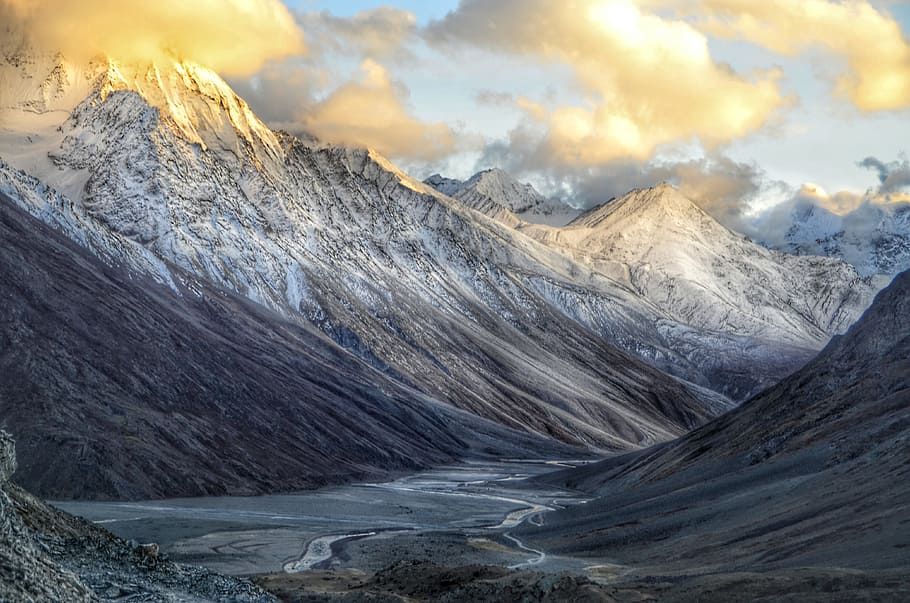
Among its many treasures is the rich tribal hill heritage of Himachal Pradesh. Nestled amidst the grandeur of the mighty Himalayas, the tribal regions of this splendid state showcase a fascinating tapestry of age-old customs, soul-stirring rituals, and captivating art forms. These lesser-known destinations offer a wealth of unique cultural experiences that are a must for any tourist seeking to delve deeper into the authentic fabric of India.
From the intricate handicrafts of Kinnaur to the ancient customs of Malana, the vibrant festivals of Lahaul to the unique cuisine of Spiti Valley, the tribal belt of Himachal Pradesh promises a journey of discovery and wonder that transcends the ordinary tourist trail.
But, there is more – Venturing beyond the well-trodden path, one uncovers the uniqueness and charm of even more remote l destinations such as Chitkul, Nako, Shichling, Tabo, Kibbar, and Langza. These hidden jewels, each unique in their charm, offer travellers an intimate exploration of India’s great tribal hill heritage.
From the last inhabited village of Chitkul offering breathtaking vistas to Nako’s ancient monasteries; from Shichling’s rugged trekking trails to Tabo’s sacred serenity; from Kibbar’s traditional cuisine to Langza’s ancient fossil remains – the experience is enthralling. With vibrant tribal festivals, unique local handicrafts, and deeply rooted rituals, these destinations are a big draw for tourists seeking an authentic and immersive cultural experience amidst the stunning landscapes of Himachal Pradesh’s tribal belt.
We share 10 unique experiences, highlighting the tribal experience in terms of sightseeing, trekking, food, festivals, handicrafts, and rituals. that is sure to captivate the heart of any intrepid traveller.
Prepare to embark on an offbeat adventure that immerses you in the heart of India’s great tribal hill heritage.
Chitkul
Chitkul situated in Kinnaur District, Sangla Valley, near the Indo-Tibet border is one of the last inhabited villages of India. The village was the last stop on an old Hindustan – Tibet route. The village has a picturesque setting straight out of a storybook. Enjoying a cup of tea to the sound of the Bapsa River and birds chirping is an experience of its own.
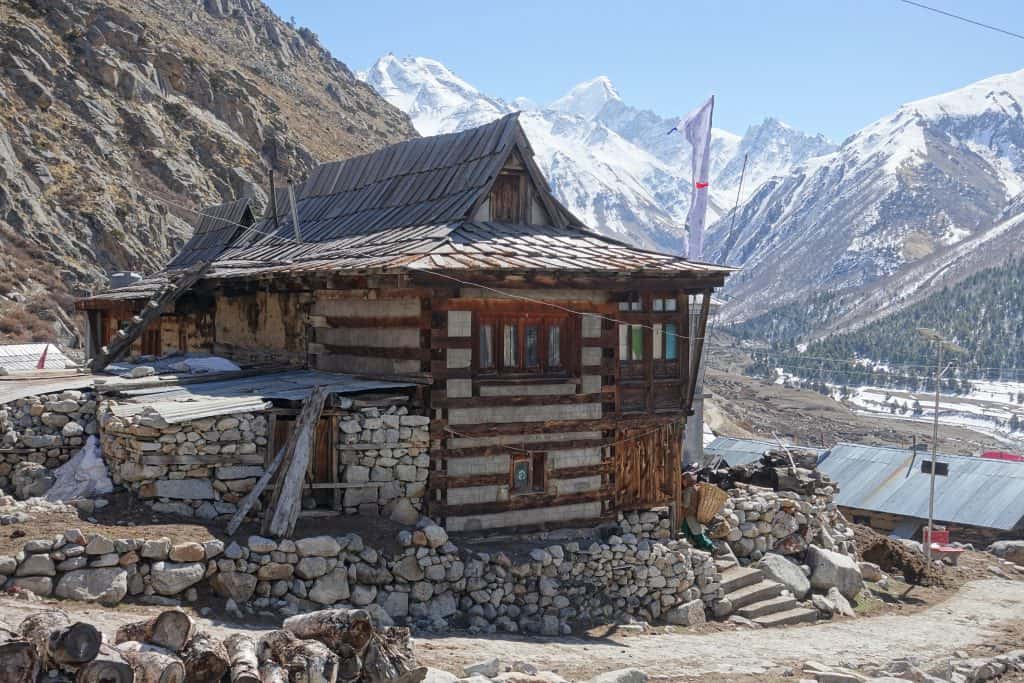
The village has beautiful wooden houses adorned with slate or tin roofs. Trekkers can explore the region’s pristine beauty through the Lamkhaga Pass trek. Food enthusiasts will love the local ‘Rajma’ grown in the region. Celebrations of the Phulaich festival, a tribute to the locally worshipped deity, are vibrant and colourful. The region is also known for its intricately woven woollen shawls, a testament to the local handicraft skills.
Nako
Nako is a village that lies on the route to Lahaul District. The locals are mostly engaged in agricultural activities, and animal fostering. Nako has an old Monastery that was built by Rinchen Zangpo the great translator. The walls of the monastery are covered with intricate drawings about the Buddha’s life. Another beautiful attraction is “Nako Lake”. The lake is a mirror to the village, clean and full of life.
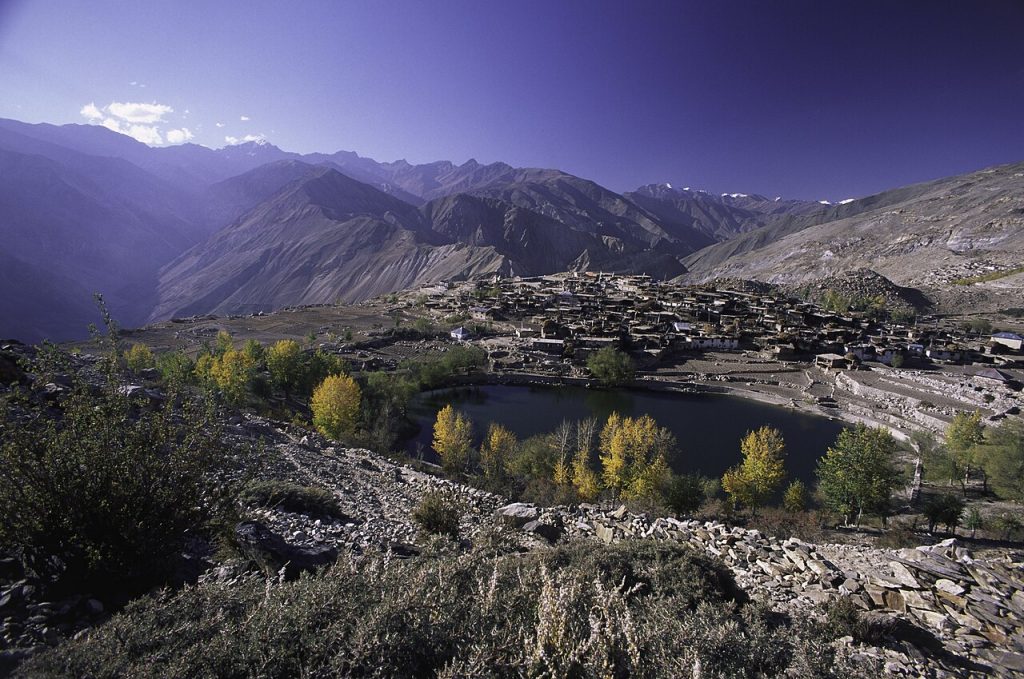
This picturesque village in the Kinnaur district, is home to the mesmerizing Nako Lake and ancient monasteries, offering a serene retreat. The region is also known for challenging treks like the Nako to Tabo trek. Local delicacies include Thukpa and Sidu, a kind of bread often enjoyed with Ghee. The Sazo festival, marking the arrival of the new year, adds to the cultural richness. Handcrafted woollen socks, known as ‘Papo,’ are a popular handicraft here.
Shichling
Shichling, in the Spiti Valley, offers stunning landscapes and a tranquil environment. It’s an excellent starting point for the famous Pin-Parvati trek.
This small village situated near the banks of the “Spiti river” has only one road passing through the village with a population of 87 people. It is a very quaint and relaxing place. The locals have small shops that quench and energize the incoming travellers. Since network coverage is not very good in these remote areas, it is nice to see a building of the Indian Post Office situated here bringing information to this small village.
The region is known for its delicious ‘Tudkiya Bhat,’ a type of pulao cooked with lentils, potatoes, and yogurt. The locals celebrate the Ladarcha fair with great enthusiasm, showcasing their rich culture. The vibrant Tibetan prayer flags and handwoven rugs are popular handicrafts in the region.
Tabo
Tabo, a small town in the Lahaul and Spiti district, is renowned for its Tabo Monastery, one of the oldest functioning Buddhist monasteries in India. Trekkers can embark on the Tabo to Dhankar trek, offering splendid views.
This small town is 47 km away from Kaza and is also situated near the banks of the “Spiti river”.
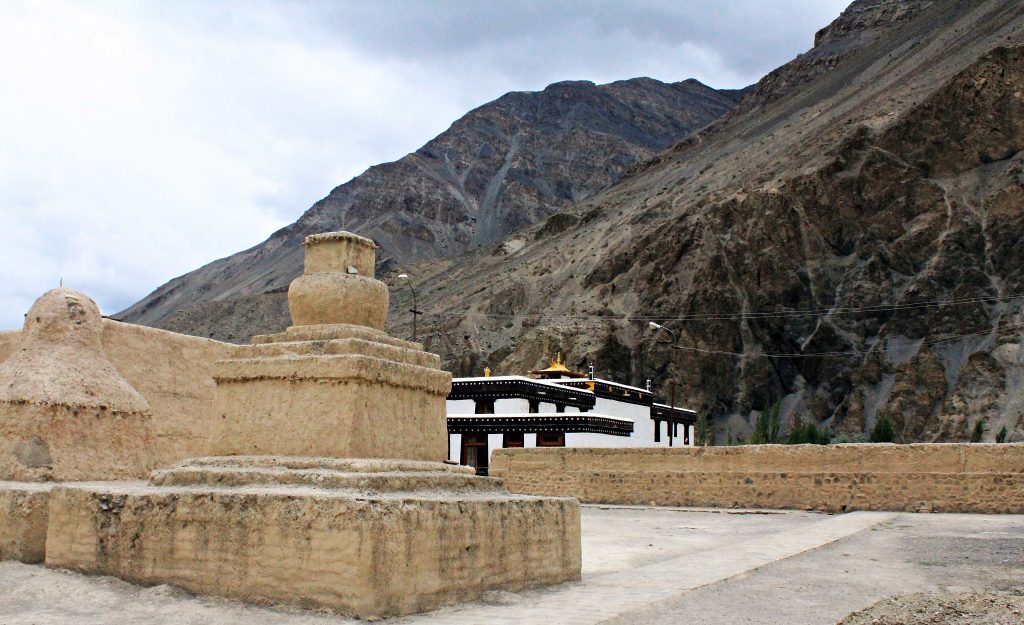
Tabo holds places of historical and Buddhist interest. The Tabo Monastery was founded in 966 CE by Rinchen Zangpo the great translator and is now protected by ASI( Archaeological Survey of India). The monastery has 9 temples, four decorated stupas, and cave shrines.
The region also showcases Tibetan Thangka paintings, an ancient art form depicting Buddhist deities. One of the notable shrines is the golden temple here which was covered in Gold. The interiors of the temples are very old and are covered with wall paintings, in the particular style of the Thankga Painting. Preservation measures are being taken to slow down the rate at which the paintings are deteriorating. The monastery’s annual festival, the ‘Chakhar Mela,’ is a significant cultural event.
Tabo also has another attraction, that is the “Tabo Caves”. The caves are filled with murals and Thangka Paintings.
Local cuisine features dishes like ‘Tsampa,’ a Tibetan staple. There is also a small market where one can enjoy a warm bowl of Thukpa while interacting with the locals.
Kibbar
Kibbar, known as the highest inhabited village in the world, offers panoramic views of the Spiti Valley. It serves as a base for the challenging trek to Kanamo Peak.
It is the last village in India in Spiti Valley at a height of 4270 meters. Kibbar is known for its monastery, wildlife sanctuary, highest post office in the world, and highest village that is connected by a motorable road. Entering the village, one can hear the sounds of children playing in the school playground.
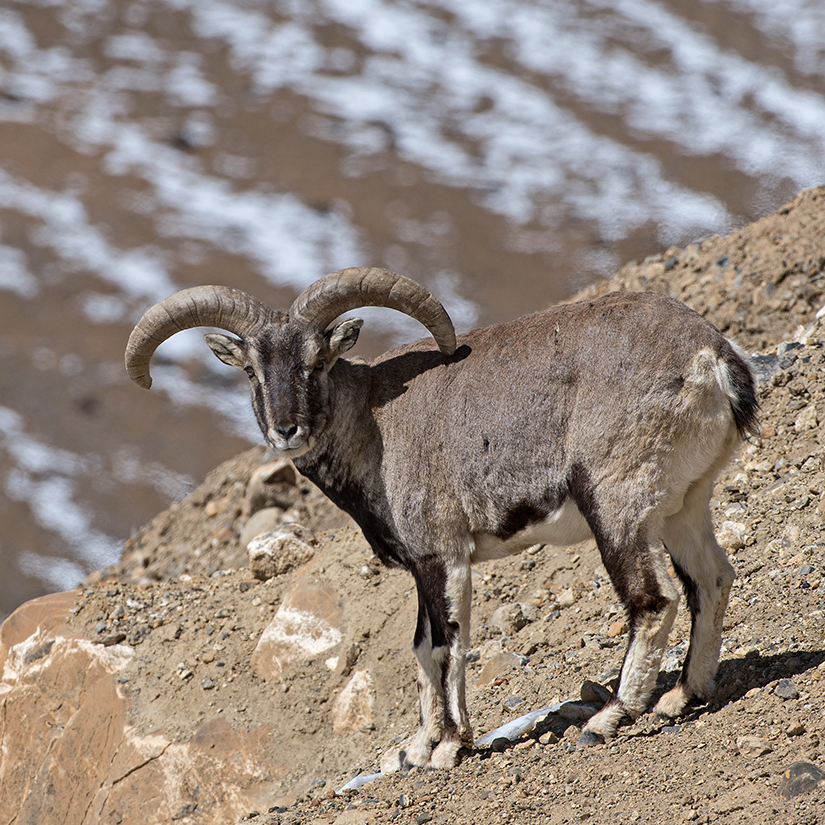
The monastery here is the “Kibbar Gompa”. The “Kibbar Wildlife Sanctuary is the only cold desert sanctuary in India. The sanctuary is habited by some rare animals such as the Magnificent Snow Leopard, Himalayan Blue Sheep, Ibex, Tibetan wolf, and red fox. Birds such as Griffons, and Bearded Eagles soar the Himalayan Skies. There are also very important medicinal plants that are a part of the traditional Tibetan Medical Healing system.
The traditional Spitian cuisine, including ‘Chu-Tagir,’ a local version of pancakes, is a culinary delight. The local festivals, including the ‘Fagli’ festival, are celebrated with traditional music, dance, and colourful masks. The region is famous for its Tibetan-style handicrafts, including intricately designed jewellery.
Langza:
Langza is one of the most beautiful villages in Spiti. The name literally means the village of the Gods. One would give up everything just to live here. Residing here is truly a gift from the Gods. Langza is situated on a plateau at an altitude of 4400 metres
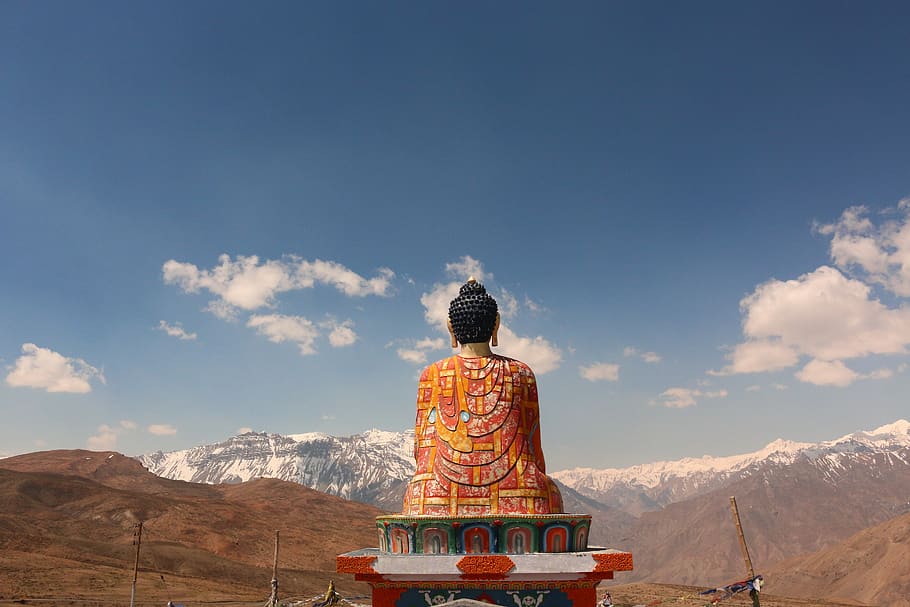
Langza, sitting high in the Spiti Valley, is famous for its fossil remains, making it a paradise for palaeontology enthusiasts. The local trek to the Chau Chau Kang Nilda Peak is a must-do for adventure seekers. One of the most notable attractions is the Buddha statue just watching over the valley silently each day and night.
The beauty of this village cannot be captured by any camera, nothing can do justice to the beauty the human eye captures. It is completely another world.
Langza is also known for its pottery and beautiful prayer wheels, perfect souvenirs to take back home. The villagers celebrate the ‘Losar’ festival, marking the Tibetan New Year, with much fanfare. Thenthuk,’ a hearty noodle soup, is a must-try local dish.
Kalpa
An embodiment of surreal beauty and rich heritage, Kalpa in Kinnaur offers visitors an unmatched tribal experience. Perched at a dizzying elevation of 9,900 ft above the district capital of Reckong Peo in Kinnaur, Kalpa is a charmingly picturesque hamlet. This tribal village in the Sutlej river valley is often stumbled upon by those travelling to the Spiti Valley.
The journey to Kalpa is challenging, but upon arrival, the urge to wander through the labyrinthine byways of the historic Chini Village (Kalpa’s former name) is irresistible. All around are towering Deodars and Oak Trees, and the scent of pine wafts from the surrounding forest is out of this world. Kalpa was once the summer haven of the British in the 19th and 20th centuries and continues to allure.
Kalpa is also the starting point of the celebrated Chakka trek! Climb an exhilarating 15,000 feet in a mere 2-3 hours. This trail is an exceptional hiking experience, offering breathtaking views of the towering Himalayan peaks and tranquil valleys below. For an additional thrill, traverse the 8km cliff-edge road of Roghi Village – it’s a daring journey, but the panoramic views of the Kinnaur Kailash range make it worthwhile!
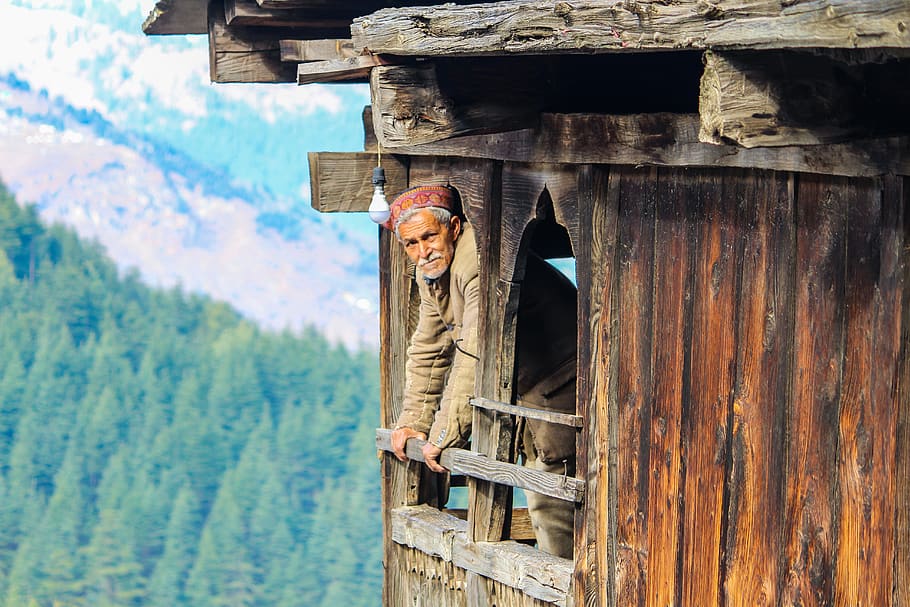
The village of Kalpa also offers a rare glimpse into traditional Himachali architecture. The village’s temples and Buddhist monasteries are built in the finest of Himachali architectural tradition. Standouts include the Narayan Nagini temple, featuring traditional Tibetan pagoda-style architecture, the intricately decorated Hu Ba Lan Kar monastery, and the nearby Sapni Fort, which highlights the antiquated Himachali architectural style with its complex wood carvings.
The region is also known for its unique culinary delights like Thukpa, a special noodle soup. The vibrant Sazo festival marking the arrival of the new year adds to the cultural richness. The place is famous for its intricately patterned woollen shawls.
Mane
Nestled in the heart of the Himalayas, Spiti Valley is a cold desert that offers a mesmerizing blend of nature and culture. Spiti Valley, also known as the ‘Middle Land,’ due to its cold desert mountain valley offers a surrealistic landscape.
Nestled within Spiti Valley lies the stunning village of Mane. At an altitude of 9,537 feet above sea level, it is known as the most beautiful village in the region. Mane Village is accessible by trekkers by crossing the bridge towards Mud and Pin Valley National Park.
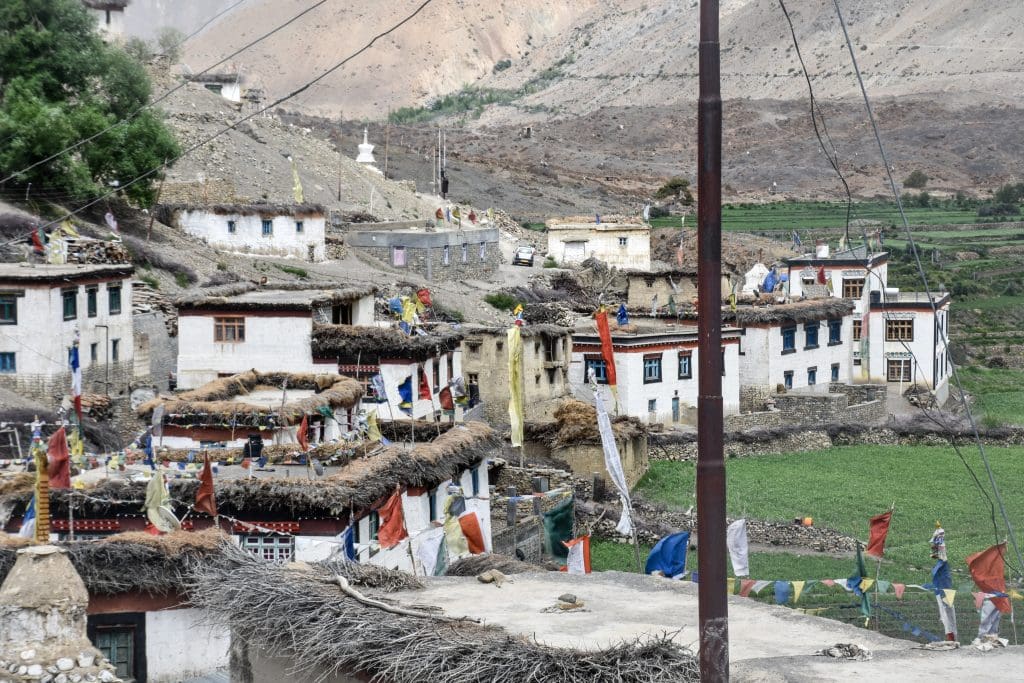
Mane Village, with its twin hamlets of Maneyogma and Manegogma, is a hidden gem. Its proximity to Sopona Lake and Manirang Pass makes it an ideal starting point for treks and adventures.
The village is Spiti’s most flourishing village, with a diverse range of vegetation and wildlife. With fewer than 100 households, it offers visitors a glimpse into traditional Spitian life. Every three years, the villagers gather for a three-day prayer ceremony that concludes with a Cham dance performed by the monks of Dhankar Monastery.
Local residents speak the Bodi (Bodhi) language, a fascinating blend of Tibetan, Mongolian, Hindi, and Chinese. At night, stargazers are treated to a magnificent display of countless stars and the Milky Way, visible to the naked eye. With its stunning misty landscape, Mane Village offers photographers ample opportunities for long exposure shots.
And the sunrises over the barren mountains are a sight to behold. For travellers in search of soulful experiences, Mane Village is not to be missed.
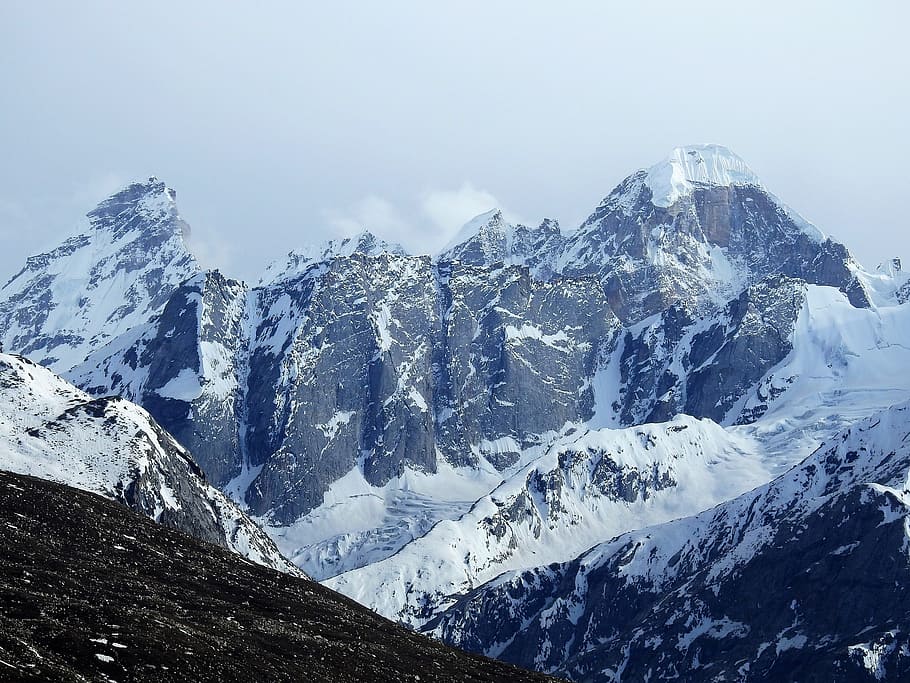
Food lovers can enjoy the local delicacy, Sidu, ‘ a local bread served with ghee, dal, or meat curry. Mana is also known for its Tibetan woollen handicrafts, like rugs, shawls, and caps.
Urgos
A land of breathtaking beauty, Lahaul is home to the ancient Trilokinath Temple and the 900-year-old Guru Ghantal Monastery. Nestled amidst the unspoiled Miyar Valley, in Lahaul, Urgos is a picturesque Lahauli village that will leave you awestruck. The untouched natural beauty of this place is unparalleled, and you will feel connected to the high mountains and sprawling fields like never before.

The Miyar Valley is tucked away between the Pir Panjal and Zanskar ranges, with Miyar Nala – also known as the Miyar River – running through it. Take in the splendour of the exceptionally long valley, stretching over 50 km from the Miyar Glacier down into the Chandra Bhaga River at Udaipur. Twelve charming farming villages rest at altitudes between 9,300 and 11,500 feet above a narrow gorge at the valley’s bottom. Urgos, one of these villages, boasts traditional stone and mud-plastered houses with flat roofs, harmoniously blending with their beautiful surroundings.
If you’re an adventurer at heart, Urgos is your ideal destination for climbing the impressive Menthosa peak, with Miyar’s scenic alpine meadows and flourishing flora. Amidst grazing yaks, relax in the tranquil surroundings and soak up the stunning views of the carpeted Edelweiss and catmint.
Experience Miyar’s rich cultural heritage and witness the local Buddhist community’s faith through a small gompa (monastery) near Urgos, complete with Lamas and gorgeous murals of scenes from Buddha’s life. Further, into the Himalayan meadows, witness the Gaddis – a shepherd tribe – grazing their flocks in late summer. Miyar Valley is known as the ‘Yosemite of India,’ and the valley trek encompasses stunning sights of remote mountain valleys and quaint villages, beckoning travellers to the second Valley of Flowers.
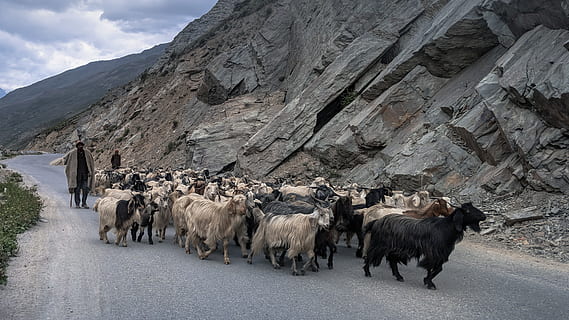
Urgos, while better known to be the base camp for trekkers, the scenic location of the village captures the grandeur of Miyar Valley, thus creating an experience you will never forget. From Urgos, you can begin your trek and explore the surroundings with barren mountains towering over you.
From here you can trek through fragrant fields of Himalayan orchids. Another short trek from Urgos will lead you to another beautiful Stupa situated at the base of a small hill, surrounded by a stream and stunning red orchids. The region’s unique culinary signature includes dishes like Chha Gosht, a traditional dish prepared with lamb in a gravy of gram flour and yoghurt.
To reach Urgos, take a local from Margul (Udaipur) to Shukto in the Miyar Valley, or hire a jeep from Manali to reach Urgos.
Bharmour
Known as Brahmpura, Bharmour is an ancient town located in the Chamba district which is famous for its temple complex of 84 shrines, the Chaurasi Temple.
The Kugti Pass trek offers a diverse and challenging route through lush forests and snow-clad peaks.
The Manimahesh Yatra, a pilgrimage trek to Manimahesh Lake, offers a unique spiritual experience. The local cuisine features slow-cooked chickpea dish Madra and the sweet Mittha. The area also has a rich tradition of handmade jewellery and embroidery. Buy local handmade jewellery and Chamba Rumals, a traditional form of embroidery.
Gadd
The semi-nomadic Gaddi tribe, mainly residing in the Kangra, Chamba, and Mandi districts, offers a unique glimpse into Himachal Pradesh’s tribal life. The breathtaking landscapes of the Kangra Valley and the Masroor Rock Cut Temple are must-visits. Adventure seekers can embark on the Gaddi Shepherd trail.
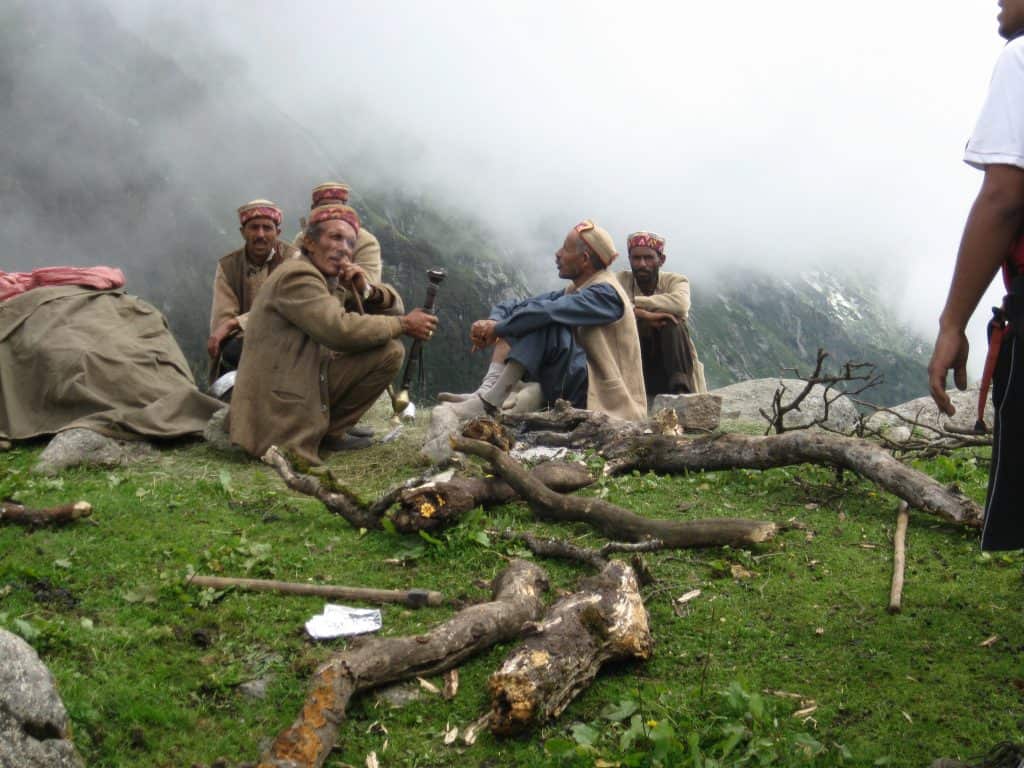
The Haldi festival, celebrated before weddings, reflects the vibrant traditions of the Gaddi tribe. The traditional bread Bhaturu, paired with Lentil Curry, is a culinary delight. The Gaddi tribal woollens, woven on traditional looms, are a must-buy.
Malana
Malana, an ancient village in the Kullu district, is known for its strong cultural ethos and is a world in itself. This picturesque village is nestled amidst the breathtaking scenery of the Parvati Valley. At an elevation of 9500 ft, this tiny hamlet boasts a well-known claim to fame: the cultivation of the finest weed in India. The coveted ‘Malana cream’, a strain of Cannabis hashish, is known for its high oil content and fragrant aroma. The government has of late come down heavily and restricted the sale of cannabis in the area.
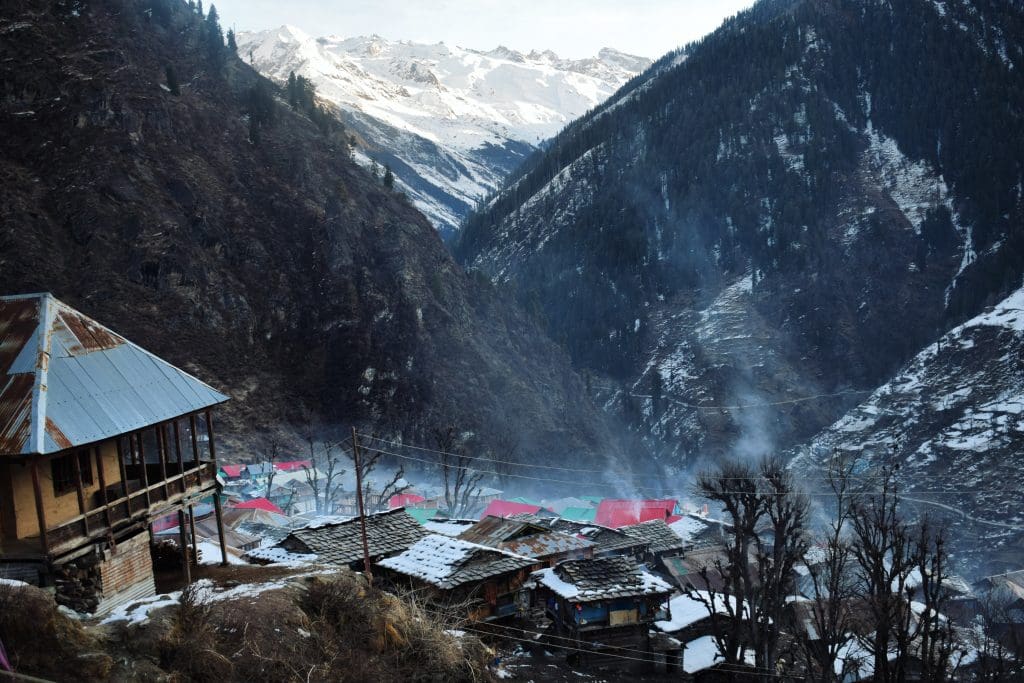
Malana’s rich history is just as impressive. The inhabitants consider themselves descendants of Alexander the Great, and the villagers honour their ancestry by following the ancient Greek court system to this day. According to legend, wounded soldiers from Alexander’s army sought refuge here after a battle with Porus, the ruler of Punjab.
The ancient Jamlu Devta temple and the panoramic views of the surrounding peaks are mesmerizing. The challenging Malana-Chanderkhani Pass trek is an adventure not to be missed.
The local cuisine includes the delicious Rajma Madra and Kaddu Ka Khatta. The Malana Fagli and Shaun festivals offer unique insights into local culture and traditions. The intricately woven woollen clothes and traditional Malana creams are popular among tourists.
Sirmaur:
Home to the Gujjar and Jaunsari tribes, Sirmaur offers a rich tribal heritage. The breathtaking Churdhar Peak and the ancient Nahan Fort are significant attractions. Treks leading to the Churdhar Peak offer stunning views.
Don’t miss the chance to visit Shivalik Fossil Park which is Asia’s first park to be built on the exact location where fossils were found. Here, you’ll find life-size fibreglass models of prehistoric animals, providing an incredible glimpse into the past.
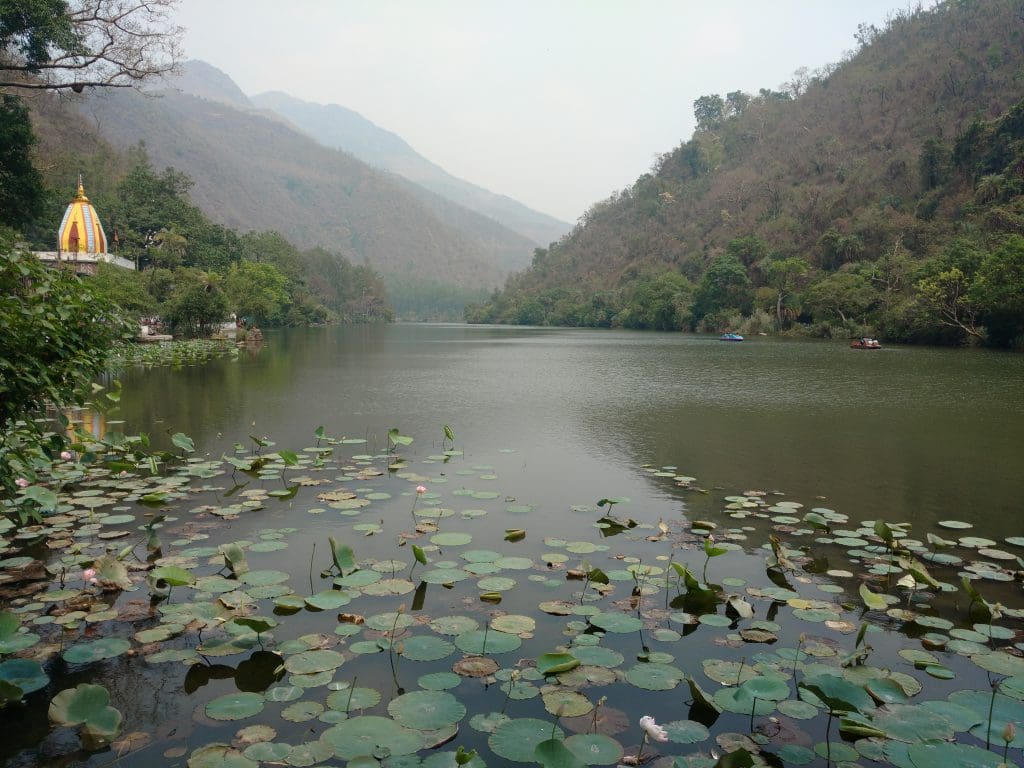
A trip to Renuka Lake is a must. The lake is surrounded by dense green forests that support a diverse array of animal and bird life, making it both a serene holiday destination and a revered pilgrimage site. With numerous wildlife sanctuaries just waiting to be explored – including Renuka Sanctuary, Simbalbara Sanctuary, and Churadhar Sanctuary – Sirmaur is the perfect off-beat place for nature lovers and history enthusiasts alike.
The local cuisine is dominated by Gujjar tribal delicacies like Bajra Roti and Kadhi. The Bishu fair held in April offers an engaging cultural experience with its local music and dance. The handmade baskets and woven carpets are a testament to the excellent local craftsmanship.
Pangi Valley
Pangi Valley, located in the isolated region of the Chamba district, is known for its unspoiled beauty. Visitors love to explore the massive and hidden Pangi Valley, boasting a whopping 1600 sq km stretch of extreme tranquillity and unique cultural experiences. Local attractions include the largest village in the valley, Dharwas, the swinging Shour bridge over an icy cold river, and the beautiful Mindhal Basan Devi temple dedicated to the deity Mindhal Devi.
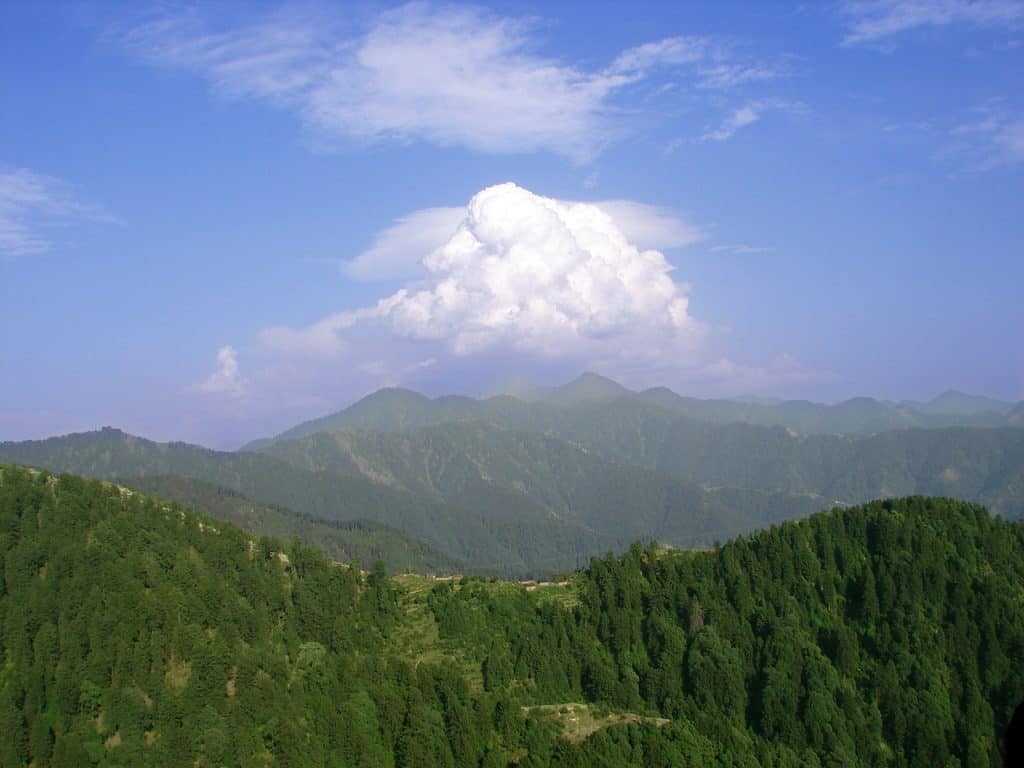
The local culture is unique and it is a real experience to see the popular folk dances such as the mask dance and lion dance. The isolation of the Pangi Valley results in a culture purely their own, creating unforgettable and unheard-of festivals in other parts of India. The unique Jukaru festival is celebrated by the locals for the entire month of February, as too the Phool Yatra festival in October and November, both featuring dance, music, and other traditions.
Local cuisine includes the tasty Sidu, a type of bread enjoyed with Ghee. Local delicacies include Thukpa and Momos. The intricate local woodwork and carvings are worth purchasing. Tibetan handicrafts like prayer wheels, thangkas, and jewellery are popular among tourists.
Travelling to the tribal belt of Himachal Pradesh offers an immersive experience of the lives of the native tribes, their rich traditions, mouth-watering cuisine, and ancient art forms. These lesser-known, offbeat places serve as hidden gems for those seeking to explore the unexplored.
Read More: Latest



